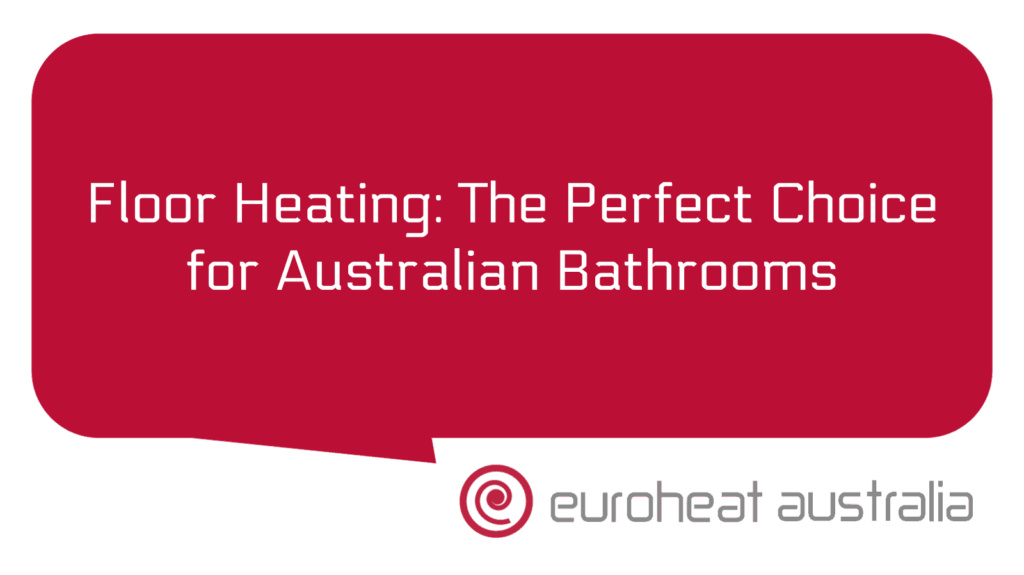If you’re building or renovating your home, you’re probably looking for the most energy-efficient heating option—one that keeps you warm without harming the environment.
Many people assume that all heating systems use a lot of energy, but hydronic floor heating is actually one of the most sustainable choices available.
Let’s break down:
✔ How much energy floor heating uses
✔ How it compares to other heating systems
✔ How to make it even more eco-friendly
How Efficient is Hydronic Floor Heating? ⚡🏡
Hydronic floor heating is one of the most energy-efficient ways to heat a home because water transfers heat far better than air.
🚀 Why is it so efficient?
✔ Uses low-temperature water (35–45°C) instead of heating air to 60–70°C.
✔ No heat loss through ducts, which waste up to 30% of energy in ducted systems.
✔ Once the floor slab is warm, it holds heat for hours, reducing energy use.
💡 How does this compare to other heating options?
| Heating System | Energy Efficiency | Heat Loss |
|---|---|---|
| Ducted Reverse-Cycle Heating | ❌ 250% efficiency | 🔥 30% lost through ducts |
| Gas Ducted Heating | ❌ 85% efficiency | 🔥 Some heat lost via vents |
| Electric Underfloor Heating | ❌ 100% efficiency | 🔥 Uses more electricity |
| Hydronic Floor Heating (Heat Pump) | ✅ 400–500% efficiency | 🔥 Minimal heat loss |
🚨 Key takeaway:
✔ Hydronic heating delivers 4–5x more heat per unit of energy than other systems.
✔ It’s far more efficient than gas, electric, or ducted heating.
How to Make Floor Heating Even More Eco-Friendly 🌍💡
If you want the most sustainable heating system possible, here’s how to do it:
✅ 1. Use a Heat Pump Instead of Gas
✔ A heat pump is 400–500% efficient, compared to gas boilers, which are only 85% efficient.
✔ Heat pumps don’t burn fossil fuels, making them better for the environment.
✔ Works perfectly with solar panels for near-zero energy costs.
✅ 2. Power it with Solar Panels
✔ If you pair floor heating with solar panels, you can run it for free during the day.
✔ A 6.6kW+ solar system can power a heat pump efficiently.
✔ With battery storage, you can heat your home even at night without grid electricity.
✅ 3. Insulate Properly to Reduce Heat Loss
✔ Under-slab insulation keeps heat inside your home, reducing energy use.
✔ Edge insulation prevents heat from leaking into walls and foundations.
✔ Better insulation = lower heating costs and less energy use.
🚀 The result? A home that stays warm with minimal environmental impact.
How Much Can You Reduce Your Carbon Footprint? 🌿♻️
💡 CO₂ emissions per year for different heating systems (200m² home):
| Heating System | Annual CO₂ Emissions | Equivalent in Trees Planted |
|---|---|---|
| Ducted Reverse-Cycle Heating | ❌ 3,500 kg | 🌳 150 trees per year |
| Gas Boiler Floor Heating | ❌ 2,500 kg | 🌳 100 trees per year |
| Heat Pump Floor Heating (Grid Power) | ✅ 500 kg | 🌳 20 trees per year |
| Heat Pump + Solar Power | ✅ 0 kg | 🌿 100% carbon neutral! |
🚨 Key takeaway:
✔ Ducted heating produces 7x more CO₂ than a heat pump-powered floor heating system.
✔ With solar power, hydronic heating is completely carbon neutral!
Final Thoughts – Is Floor Heating an Eco-Friendly Choice? 🌱✅
🚀 Yes—hydronic floor heating is one of the most sustainable heating options available.
✔ Uses far less energy than ducted or gas heating.
✔ Works perfectly with solar power for near-zero emissions.
✔ Provides gentle, consistent warmth without overheating or wasting energy.
📞 Want an energy-efficient heating system for your home? Contact Euroheat Australia today for expert advice and a custom heating design!





